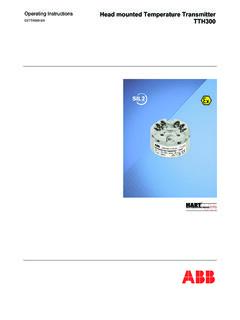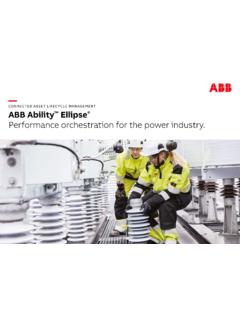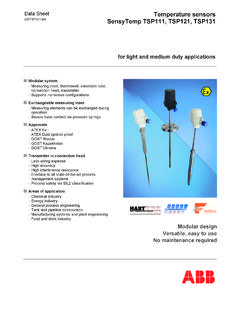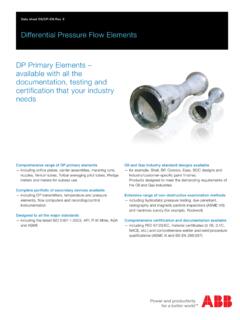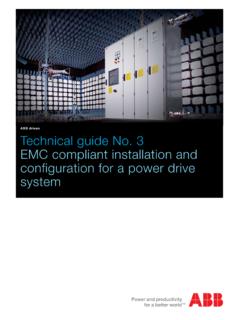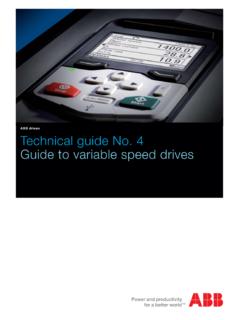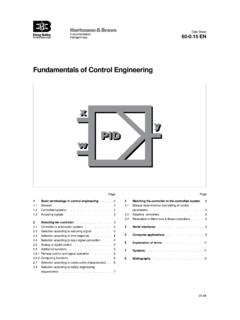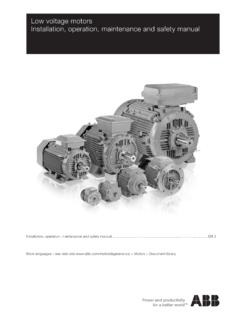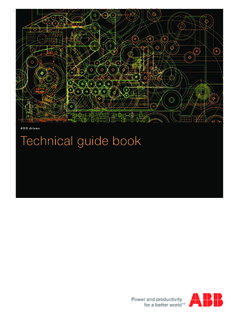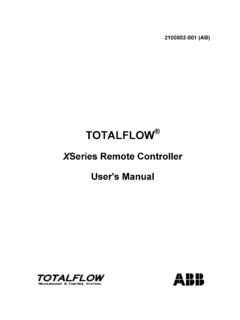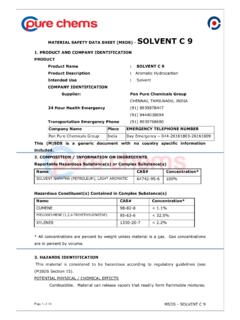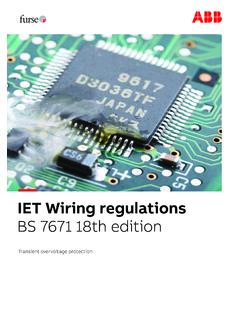Transcription of Technical reference Earthing standards
1 16/22 Total Solution to Earthing & Lightning Protection | 9 AKK106354A336016 Technical referenceEarthing standardsInstallation of a well designed Earthing system is a fundamental requirement for all structures and electrical systems (at all voltages).Effective Earthing safeguards people from risk of electric shock, in that hazardous-live-parts shall not be accessible and accessible conductive parts shall not be hazardous live , and ensures a low impedance route to the general mass of earth for currents in the electrical system, under both normal and fault number of national and international standards have been published which define Earthing system design parameters for structures, electrical equipment and systems, including: BS EN 50522: Earthing of power installations exceeding 1kVac BS 7430.
2 Code of practice for protective Earthing of electrical installations BS 7354: Code of practice for design of high voltage open terminal stations IEEE Std 80: IEEE Guide for safety in AC substation grounding ENA TS 41-24 Guidelines for the design, installation, testing and maintenance of main Earthing systems in substationsThe design, specification, inspection and periodic testing of Earthing systems should follow the guidance and recommendations provided by these 7430: protective Earthing of electrical installationsBritish Standard BS 7430 provides guidance on Earthing of general land-based electrical installations in and around buildings in the UK, including.
3 Low voltage installation Earthing and equipotential bonding for general, industrial and commercial buildings, locations with increased risk, rail systems etc The interface between low voltage and high voltage substations Earthing of generators and Uninterruptible Power Supplies (UPSs) supplying low voltage installationsBS 7430 defines the elements for creating an appropriateearthing arrangement for a low voltage installation, including a main Earthing terminal, protective conductors, Earthing conductors and circuit protective conductors, and the use of earth electrodes to dissipate currents to the general mass of earth.
4 Extending the Earthing arrangement through the use of equipotential bonding measures to cover exposed and conductive metal parts is further recommended to protect against step and touch voltages, and to remove risk of dangerous sparking. Five classes of low voltage electrical installation are defined within the standard - TN-S, TN-C, TN-C-S, TT and requirements for Earthing these low voltage installations are defined in the IET Wiring Regulations, BS 7671:2008(+A1:2011). The Earthing arrangement should be sufficiently robust to ensure it lasts the lifetime of the installation, and be protected from mechanical damage and corrosion so that it remains capable of carrying the maximum expected current, it is specified for under both normal and fault 7430 therefore defines selection parameters for the earth-ing arrangement, the size and material for conductors, earth electrodes etc, and makes clear the need for careful consideration of site conditions (soil composition and resistivity).
5 Taking actual measurements at the site is important to gauge the expected effectiveness of the Earthing arrangement, and guidance is provided for measuring resistance calculations for earth plates, earth rods, ring conductor and foundation earth necessary in high resistivity areas or on rocky ground, treatment of the soil through use of an earth electrode backfill is recommended to improve earth contact earthingBS 7354, IEEE std. 80 and ENA TS 41-24 reference the requirements for Earthing of design and specification of an appropriate Earthing arrangement for substations is essential to provide a low impedance path for earth fault, and lightning currents, and to protect personnel on site from potentially fatal step and touch voltages.
6 These standards provide guidance on (but not limited to): Maximum permitted step and touch voltages Methods for calculating Earthing system design High voltage earth electrode selection, including type, material and size Switching and busbar arrangement Equipotential bonding Insulation co-ordinationPrimary to these standards is limiting earth potential rise (EPR) under earth fault conditions so that step and touch potential limits are not exceeded, and earth resistance remains as low as possible. Essentially, use of an Earthing grid consisting of horizontal cross-bonded Earthing conductors is recommended, augmented by earth rods where the site includes low resistivity layers beneath the surface.
7 These earth rods mitigate seasonal variations in earth grid resistance at the grid s burial depth.
